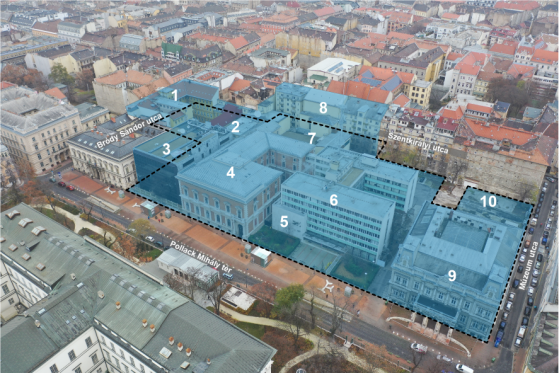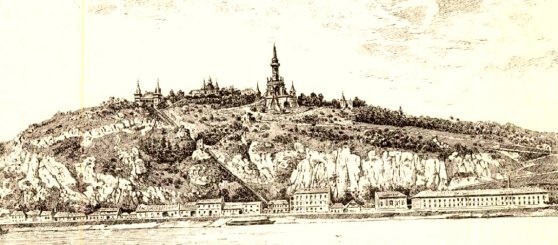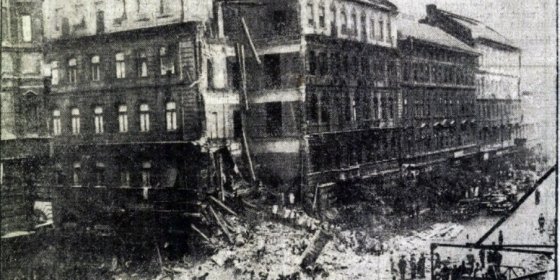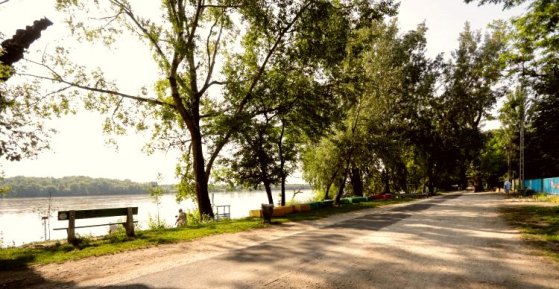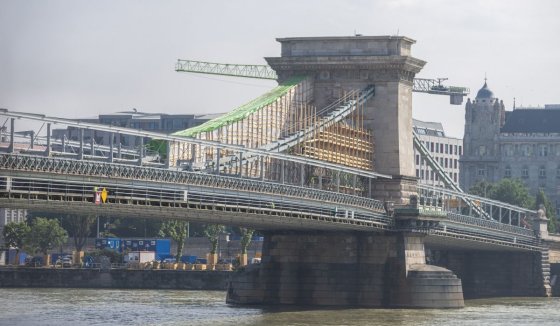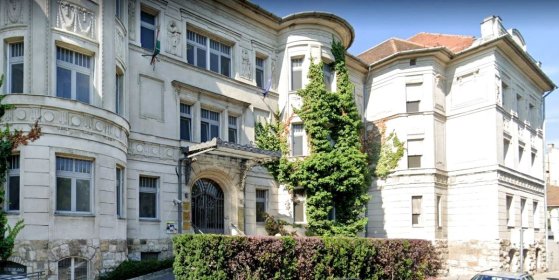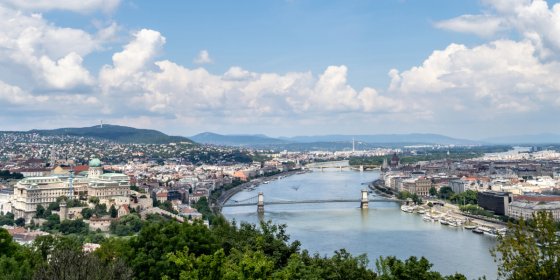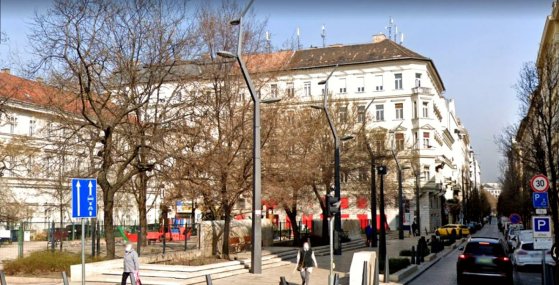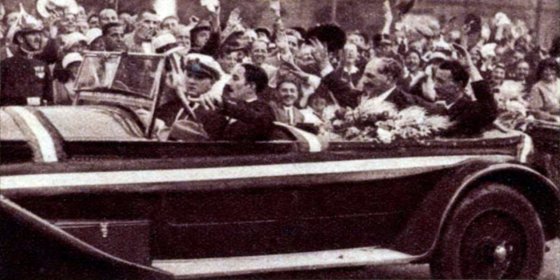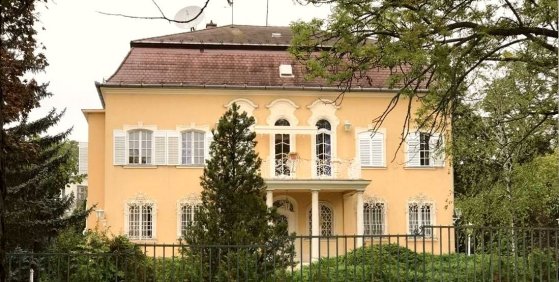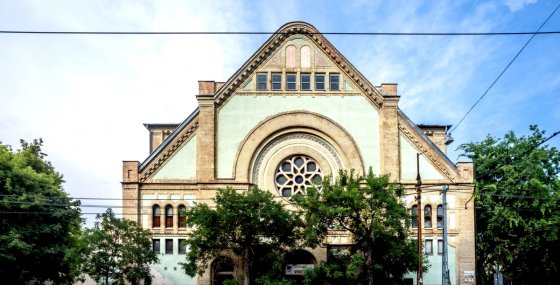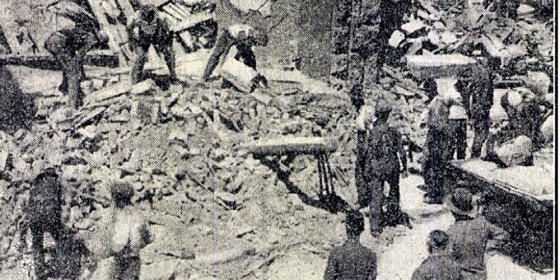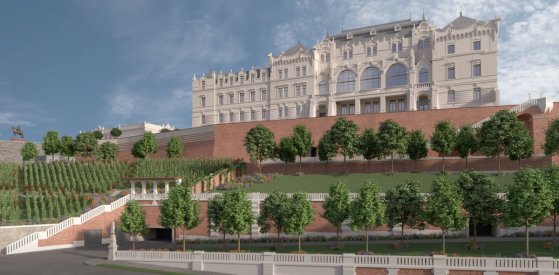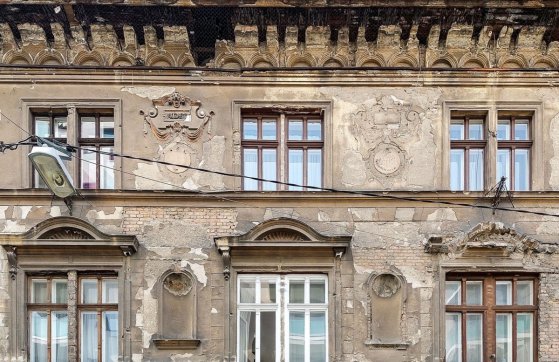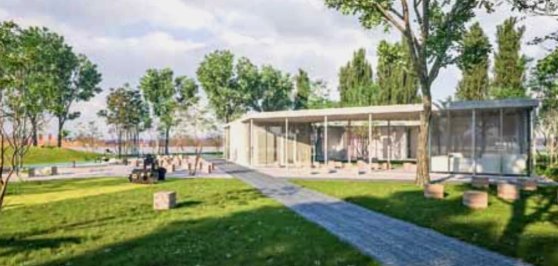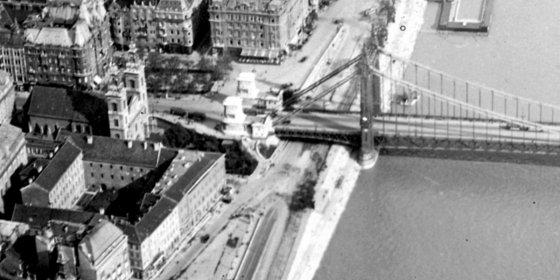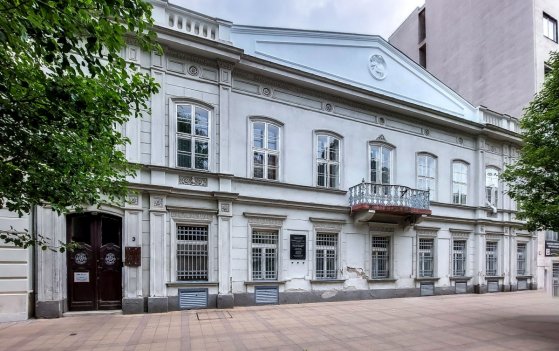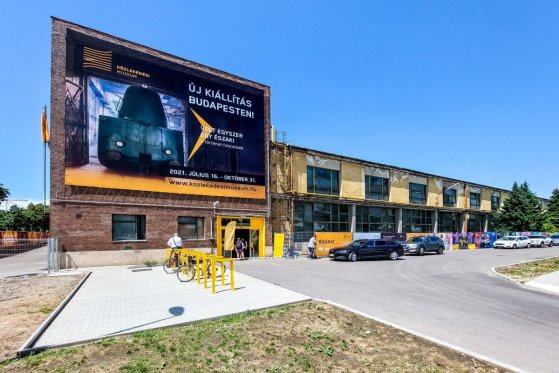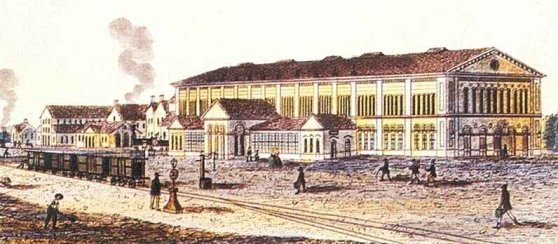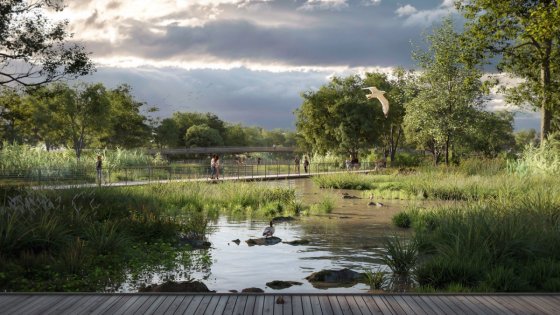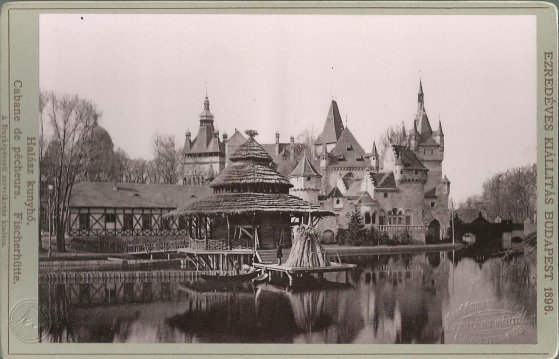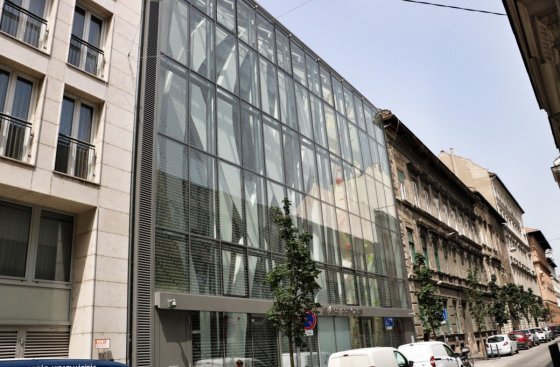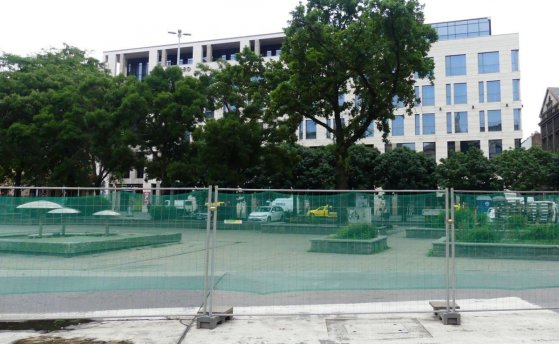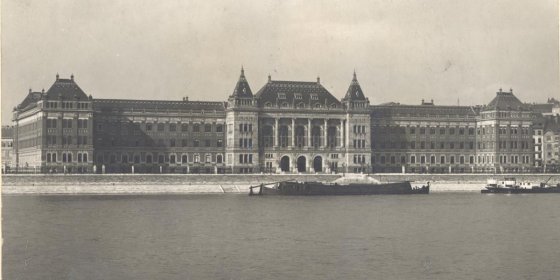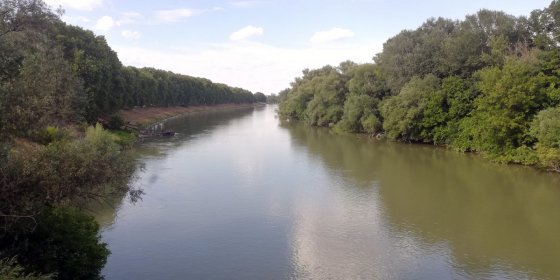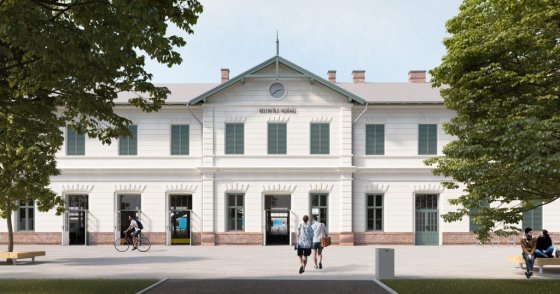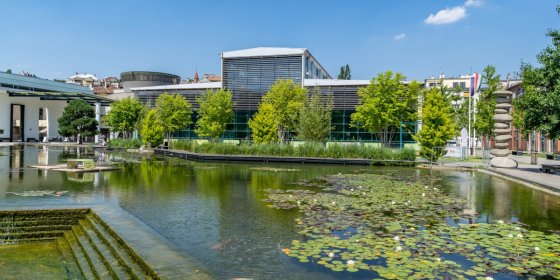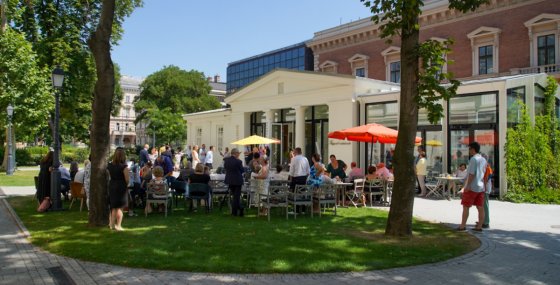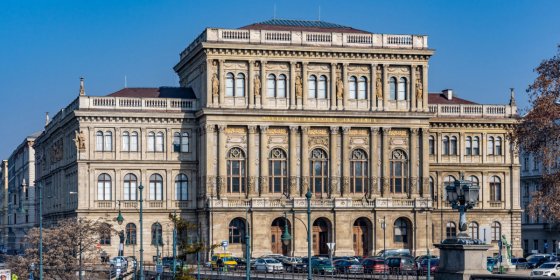 The „intertwined history” of the bridges and the city of Budapest
Which ideas and events have shaped the fate of bridges of Budapest and the cityscape? Alongside many other interesting facts, this question is also answered this newly published book by the Budapest City Archives, which introduces the history of bridges in Budapest.
The „intertwined history” of the bridges and the city of Budapest
Which ideas and events have shaped the fate of bridges of Budapest and the cityscape? Alongside many other interesting facts, this question is also answered this newly published book by the Budapest City Archives, which introduces the history of bridges in Budapest.
pestbuda.hu
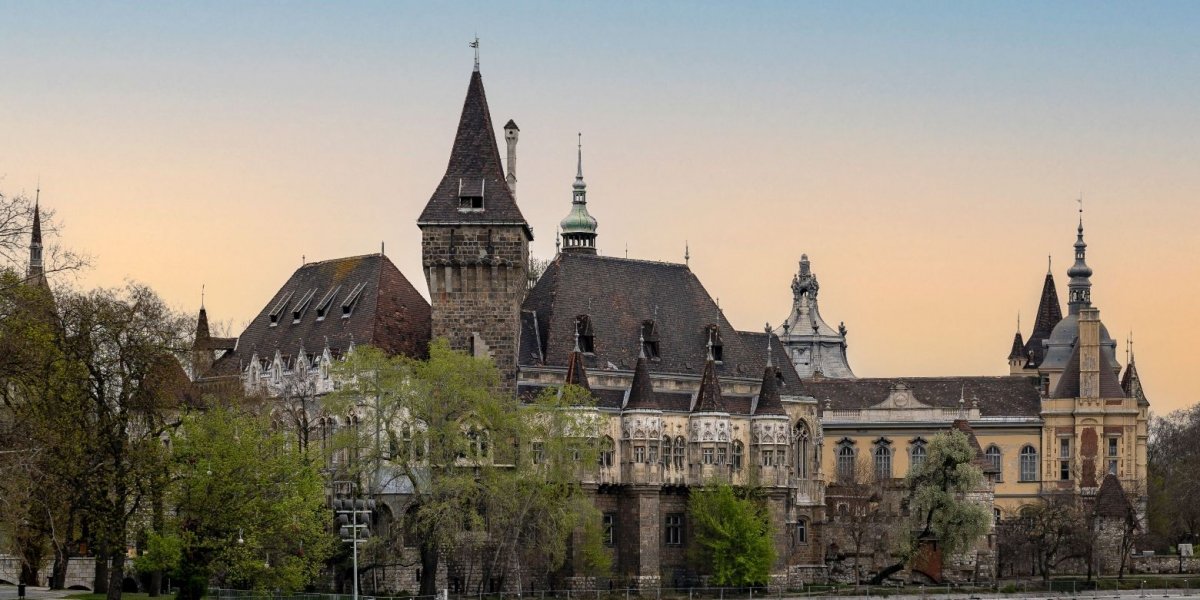 Vajdahunyad Castle was rebuilt for The Museum and Library of Hungarian Agriculture, founded 125 years ago
Vajdahunyad Castle was rebuilt for The Museum and Library of Hungarian Agriculture, founded 125 years ago
July 27, 2021 at 9:00 AM
Vajdahunyad Castle, located on the former Széchenyi Island of the Városliget Lake, has been very popular since 1896. With its special appearance and unique atmosphere, it attracts tens of thousands of visitors. Walking between its walls and characteristic parts of the building, one can travel a long way in time and space from the Highlands to Transylvania, from the Romanesque to the Baroque period. And the walls hide one of Europe’s largest agricultural collections and museums, celebrating its 125th anniversary this year.
By the end of the year, the plans for the new campus of the Pázmány Péter Catholic University will be completed
July 26, 2021 at 5:00 PM
The monumental values of the Károlyi Palace and the Esterházy Palace must be preserved and the spirituality represented by Catholic education must be displayed - these conditions must also be met by the 12 architectural firms that were given the opportunity to design the campus of Pázmány Péter Catholic University in Józsefváros. The task must be completed by September, and the results will be announced in November.
Several people have already planned a funicular to Gellért Hill, but neither the cogwheel nor the steam cable car has been built
July 26, 2021 at 2:00 PM
What could be the explanation for the fact that despite the approved plans since the second half of the 19th century, the construction of a Gellért Hill funicular has never started? Guido Fuchs already in 1884, then in the 1890s Mór Balázs, Vince Ede Miller and Ferenc Novák put their own ideas on the table. However, none of them came close to implementation.
The residential house on Rákóczi Road still stands today, the corner of which collapsed 85 years ago
July 25, 2021 at 9:00 AM
A collapsing house in Budapest in 1936 could have caused a huge tragedy. In vain did the residents signal to the owners that the walls were cracking, they did not feel safe, no substantive action was taken. The corner of the house at 73 Rákóczi Road collapsed on 23 July 1936, a few minutes before 3 pm.
The free beach on the Római-part will soon open
July 24, 2021 at 2:00 PM
From 30 July, we can bathe in the Danube in Budapest again. On the Római-part (Roman Beach), in the area on the banks of the Danube next 15–17 Kossuth Lajos üdülőpart (resort) a free beach will open, where until the end of August anyone can bathe in the Danube.
The Chain Bridge will be lighter after the renovation - the new deck plates are already being manufactured
July 23, 2021 at 1:00 PM
Instead of the old reinforced concrete, steel deck plates will be placed on the Chain Bridge during the renovation. The 94 new steel deck slabs will better fit the structure of the bridge and will also significantly reduce the overall weight of the crossing.
The Városmajor Cardiovascular Clinic will be renewed
July 23, 2021 at 9:00 AM
The buildings of the Városmajor Clinic will be modernized: among other things, the roof, the external thermal insulation and the main entrance gate will be renovated, and the solar park will also be expanded. The former János Sanatorium has treated several famous patients over time, including Mihály Babits and Endre Ady.
Budapest has not been included in the list of endangered World Heritage sites
July 22, 2021 at 6:00 PM
According to a UNESCO decision today, the capital’s World Heritage sites are not in danger.
Renovation of Hild Square in the Inner City
July 22, 2021 at 4:00 PM
Hild Square and its surroundings will be modernized in the 5th District: the playground and public lighting will be renovated and also a small one-storey building for toilets will be built.
Transatlantic pilots were greeted with a huge folk festival in Budapest 90 years ago
July 22, 2021 at 9:00 AM
The people of Budapest did not line up many times to celebrate the heroic deed of the Hungarians on the street. Funerals were unfortunately, more common, but 90 years ago the opportunity was given to celebrate the Hungarians as a hero in a street parade. Namely, György Endresz and Sándor Magyar, who flew across the Atlantic Ocean breaking three world records.
Árpád Göncz and his wife will receive a statue in Vérhalom Square
July 21, 2021 at 4:00 PM
A tender was announced for the creation of a double statue of the former President of the Republic and his wife, which will be located in Vérhalom Square in the 2nd District, near the last home of the Göncz couple.
There is a fencing room in the synagogue in Angyalföld
July 21, 2021 at 11:00 AM
After the Second World War, many synagogues were left without congregations in Hungary. Ecclesiastical buildings left empty in several parts of the country were either demolished and their building materials used to renovate, rebuild other buildings, or were given other functions. The building of the synagogue on Dózsa György Road has not been demolished, it is still in communal use today - but differently than before.
House collapsed in Angyalföld - The tragedy 90 years ago claimed the lives of eight people
July 21, 2021 at 9:30 AM
The whole of Budapest was shaken by the misfortune that took place 90 years ago and claimed the lives of eight workers. During construction, a house collapsed in Angyalföld, Szent László Road.
Reconstruction of the Palace of Archduke Joseph begins
July 19, 2021 at 6:00 PM
Reconstruction of the Palace of Archduke Joseph on Szent György Square, Buda Castle begins. The building, which was blown up in 1968 and its former Neo-Renaissance barn and palace garden, is also being reconstructed.
A statue of Mozart and Dvořák once adorned the facade of Ellinger Palace
July 18, 2021 at 10:00 AM
At first glance, people can only see one dilapidated house in Terézváros, at 2/B Németh László Street. However, behind the dropping plaster of the once ornate Ellinger Palace, special stories emerge. Half of the house was owned by the violinist and internationally renowned music teacher, Gusztáv Ellinger, while the other half was the architect Ferenc Novák's, who became known in the 1890s for his plans for the Gellért Hill Funicular.
A community park is being built in Máriaremete
July 17, 2021 at 4:30 PM
In the green area next to the Dezső Gyarmati Swimming Pool and the József Pokorny Sports and Leisure Centre, the local government will establish a community park in Máriaremete. In addition to the sports fields, there will also be picnic places and street furniture for relaxation in the new leisure park.
When the ramp of the Elizabeth Bridge was widened, moving the church also came up, in the end the sidewalk was lowered
July 17, 2021 at 9:00 AM
In the 1930s, the car traffic in Budapest was already so high that the Pest bridgehead of the Elizabeth Bridge had to be rebuilt in order to avoid permanent traffic jams and the risk of accidents. Even the relocation and even demolition of the Inner City Parish Church was discussed, but instead the designers chose an imaginative and inexpensive technical solution. The new ramp of the bridge was completed on 17 July 1936.
Teleki Blanka opened the first school for girls in Pest in a building on Szabadság Square that still stands today
July 16, 2021 at 9:00 AM
A peculiar twist of fate is that Blanka Teleki opened the first education institution for girls in Pest next to the Újépület ('new building') in Lipótváros, that served as a military barracks, which became her prison in 1851, because according to the imperial authorities the 1848 revolution started from her educational institution. The building, which still stands on the former Promenade, later housed a bank, then the economic police of the Ministry of the Interior, and today the headquarters of the Catholic Camp Bishopric.
Next year, the construction of the new Museum of Transport the area of the Északi Járműjavító may begin
July 15, 2021 at 5:30 PM
The Északi Járműjavító (Northern Locomotive Workshop) on Kőbányai Road is saying goodbye with a special temporary exhibition: the building can be seen in its current condition until October, and the exhibition will show not only the life of the former workshop, but also the plans of the new Museum of Transport. The new cultural district, centered on the museum and the existing Eiffel Workshop, will be transformed from the locomotive workshop that closed in 2009. The area will also be connected to Népliget and a new railway station is planned.
A train pulled out of Budapest's first railway station 175 years ago
July 15, 2021 at 9:00 AM
The first station building ('indóház') in Pest was handed over on 15 July 1846, from where the first Hungarian steam-powered train to Vác, which was the first section of the railway line to Vienna, left. With rail transport, the central role of Pest has been strengthened within the country and it set a significant development in motion. So much so that by the 1870s, rail traffic had outgrown Pest's first railway station.
A wetland will also be established in the new Csepel Island public park
July 14, 2021 at 6:00 PM
The Budapest Development Center (BFK) has announced a public procurement procedure for the planning of a wetland to be established in the area of the Csepel recreational public park. The idea is that the Wetland, will keep rainwater generated on paved and built-up surfaces of the district along Weiss Manfred Road in place, providing a natural habitat for many plant and animal species.
Renowned photographers of the era captured the National Millennium Exhibition in the City Park 125 years ago
July 14, 2021 at 9:30 AM
The National Millennium Exhibition in City Park, opened in 1896, is a unique event to this day. The capital has not hosted such a large-scale exhibition since then, which also presents the history, economy, industry, and ethnography of the nation. Thanks to the photographs taken by the famous photographers of the period, György Klösz and Antal Weinwurm, people can still marvel at the beautiful pavilions built for this event, the ethnographic village, the restaurants and the festive atmosphere.
The sports centre in the Inner City was completed - Special architectural solutions were applied in Vadász Street
July 13, 2021 at 4:00 PM
The Sports and Adventure Centre has been established by the Inner City Local Council at 30 Vadász Street. In addition to the sports fields, the new facility will have a 4-lane, 25-metre pool, a training pool and a thermal water wellness area, which will be fed by its own thermal water well. Great emphasis was placed on ecological and energy efficiency aspects when designing the building. As a result of special architectural solutions, a number of sports departments have been incorporated into the small floor area.
There will be more green spaces and fountains in the renewing Blaha Lujza Square
July 12, 2021 at 3:30 PM
The renovation of one of the busiest public areas in Budapest, Blaha Lujza Square, has started, and the works are expected to last until the end of next year. They increase the green space in the square and increase the accessibility of public transport and built environment.
The Royal Joseph Polytechnic University is 150 years old
July 11, 2021 at 9:00 AM
The history of the Budapest University of Technology and Economics dates back to the 18th century, as one of its predecessors, the Institutum Geometricum, was founded in 1782, while the other, the Joseph College of Technology, was founded in 1844. Yet today's institution, independent and acting as a university on its behalf, was established 150 years ago, in 1871, when the king sanctified the statutes of the university.
Tranquillity and recharge - The special look of Hajógyári Island
July 10, 2021 at 10:00 AM
Óbuda Island, also known as Hajógyári Island, has recently shown its more pleasant face: there are no weeks-long events, festivals or pavilions. The area presents a peaceful, so to speak natural side to the visitors, so it is worth reporting on what people can find on the most troubled island of Budapest in "peacetime".
The station building in Kelenföld escaped destruction
July 9, 2021 at 2:00 PM
The Hungarian Museum of Science, Technology and Transport will create a railway history exhibition space in the listed 137-year-old building. According to the plans, in addition to the former station building, a museum garden will be created and the house will also receive an extension: a terrace serving as a lookout point, a train viewing place. The building permit has now been granted to the investment.
From factory to an exciting cultural centre - Millenáris Park is 20 years old
July 8, 2021 at 9:00 AM
Today, Millenáris is a huge park and event centre in Buda, but once the Ganz factory operated here, on the site of which, with the partial retention of the halls, one of the largest cultural centres of Budapest was opened on 6 July 2001.
A confectionery opened in the Museum Garden in a former garden house
July 7, 2021 at 4:00 PM
In the garden of the Hungarian National Museum, in the renovated former garden house, a new confectionery is operating today, run by the Auguszt family. The store opened in the building on the side of Pollack Mihály Square was named after Geraldine Apponyi, who was the niece of Albert Apponyi and married the King of Albania in 1938.
The Academy operated in several palaces in Pest before moving into its headquarters
July 7, 2021 at 11:00 AM
Renovation of the headquarters of the Hungarian Academy of Sciences will begin soon. The Neo-Renaissance palace was built between 1862 and 1865, according to the plans of Berlin-based architect Friedrich August Stüler, and execution was controlled by renowned architects such as Miklós Ybl and Antal Szkalnitzky. The company of scientists waited forty years for the independent headquarters. The institution, founded in 1825, rented rooms in the city's famous buildings until the palace next to the Chain Bridge was completed.
More articles
 The „intertwined history” of the bridges and the city of Budapest
Which ideas and events have shaped the fate of bridges of Budapest and the cityscape? Alongside many other interesting facts, this question is also answered this newly published book by the Budapest City Archives, which introduces the history of bridges in Budapest.
The „intertwined history” of the bridges and the city of Budapest
Which ideas and events have shaped the fate of bridges of Budapest and the cityscape? Alongside many other interesting facts, this question is also answered this newly published book by the Budapest City Archives, which introduces the history of bridges in Budapest.
 The Bridge Report, which brought a turning point in the history of Budapest
A travel report that changed the history of Pest and Buda, as well as Hungary. The little book contributed to the change of half a thousand years of legal customs and the implementation of an investment of unprecedented size and technical quality. This book was The Bridge Report [Hídjelentés in Hungarian].
The Bridge Report, which brought a turning point in the history of Budapest
A travel report that changed the history of Pest and Buda, as well as Hungary. The little book contributed to the change of half a thousand years of legal customs and the implementation of an investment of unprecedented size and technical quality. This book was The Bridge Report [Hídjelentés in Hungarian].
 Drama on the university wall - The heroic monument was planned 95 years ago
In the constant hustle and bustle of the Egyetem Square in Pest, the students may not even notice the monument that decorates the short section of wall between the church and the central building of ELTE. However, it commemorates their predecessors, the heroes who fought for their country in World War I, and those who heroically helped them. The first design of the dramatically collapsing soldier was born in 1928, ninety-five years ago.
Drama on the university wall - The heroic monument was planned 95 years ago
In the constant hustle and bustle of the Egyetem Square in Pest, the students may not even notice the monument that decorates the short section of wall between the church and the central building of ELTE. However, it commemorates their predecessors, the heroes who fought for their country in World War I, and those who heroically helped them. The first design of the dramatically collapsing soldier was born in 1928, ninety-five years ago.

